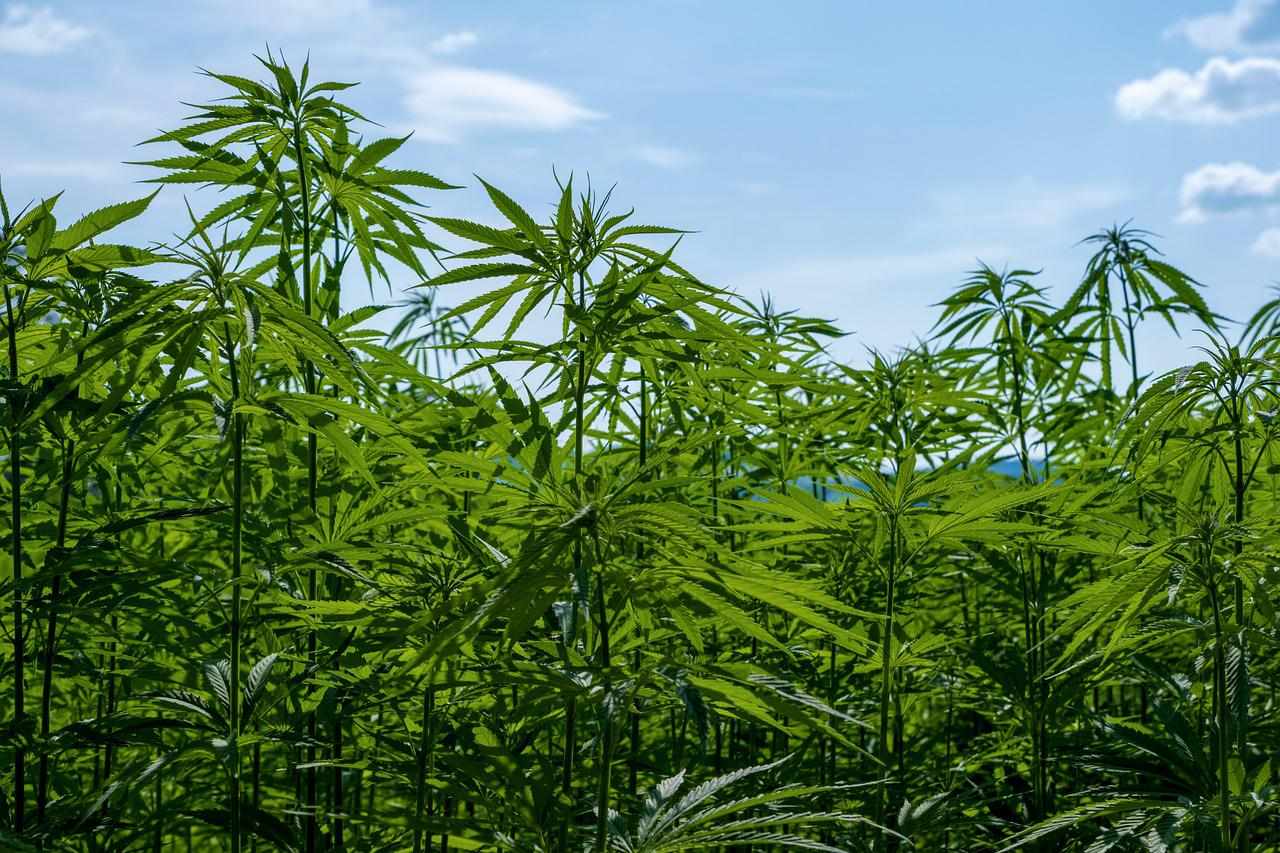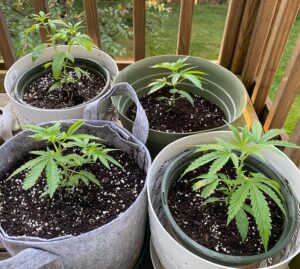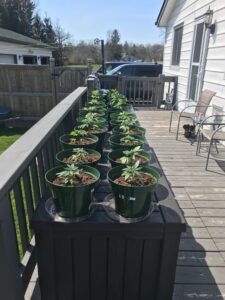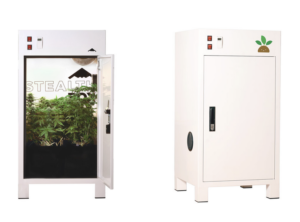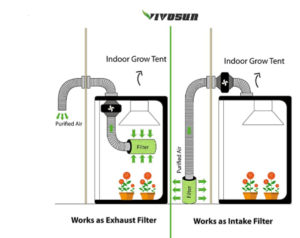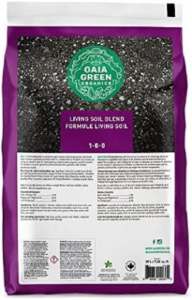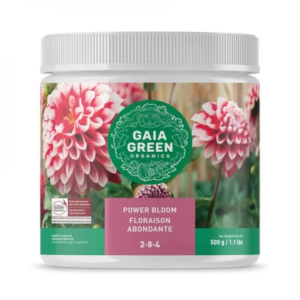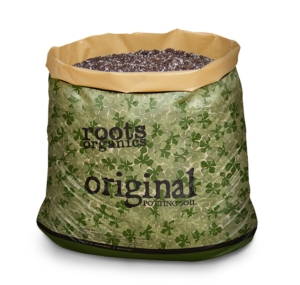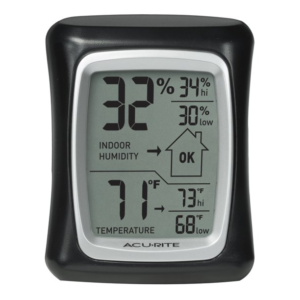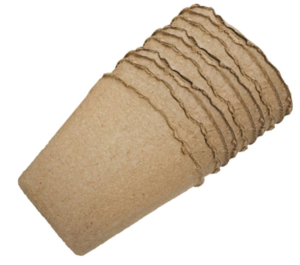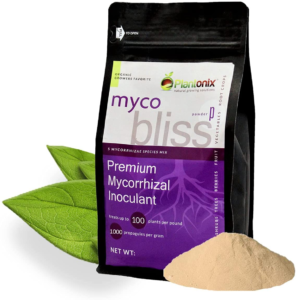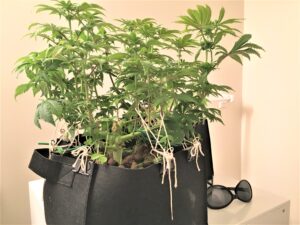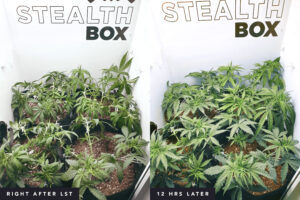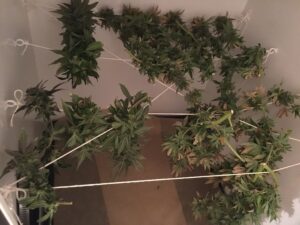Please see additional disclaimers below.
This is not intended as advice, medical, legal or otherwise, and is to be used solely for educational and entertainment purposes. See Program Agreement for further disclaimers and release of liability.
Dear People,
Countless numbers of people have found enormous pain relief, safely, using cannabis. We hear about others who have successfully healed their cancers. To my and the entire industry’s knowledge, no one has ever died from using just cannabis. They might have had a terrible, not-soon-forgotten emergency room experience. But they haven’t died. Before the 1920’s-30’s, it was regularly prescribed in small amounts for pain and nervous disorders by family physicians. In the 30’s it became demonized by the Rockefellers and the nascent pharmaceutical industry, eventually making cannabis so illegal and propagandized as evil, people were jailed for the rest of their lifetimes just for having the tiniest amount in their possession. However, it must be used responsibly and with mindful purpose. Some cancers it might aggravate instead of heal. Some people have allergic reactions of various types using cannabis.
So, you see all the disclaimers scattered around my cannabis topics. I hear you. Many are in so much pain, are desperate for relief, and have been around the medical establishments’ merry-go-round so many times that the disclaimers no longer matter. But here on this site, please know that in any of my cannabis topics as you review them and might start doubting again, hold your despair at bay a bit. I want to let you know that even if cannabis also ends up being not for you, this site is loaded with tons of alternatives that so many others have successfully used to reduce their pains WITHOUT any cannabis at all, or with just the slightest amount one time a day. I so encourage you to continue to explore the rest. Perhaps you too will be one of those truly free from all the drugs! Please give yourself a chance.

Be aware the penalties for illegally growing (homegrown or commercial without particular and specific permits for your area) cannabis of any kind, whether cannabis marijuana or cannabis hemp for CBD, are some of the most strict and severe.
This is also true for purchasing cannabis seeds or clones (as well as cannabis flower buds for consumption) and transporting those across state or federal borders, even if one is transporting these from one legal location state to a different but still legal different state.
In addition, even when you are in a legal state or legal local growing area, growing and possessing cannabis of any kind is still federally illegal. Some legal users publicly brag about their grow and what they’ve done or gotten from it and open themselves to scrutiny and possible run-ins with the federal policing of this plant. Discretion is a good trait to have even as you pursue growing by following all the laws.
That said, many US states allow some type of cannabis home grow, though each location has very specific restrictions on how many plants per year can be grown or where they can be grown (indoors or out), or if a medical card is needed in order to grow a certain amount and other.
Before considering growing your own, you MUST check your state, local and federal home grow laws. And I suggest you check your laws from several sources but most specifically, check your cannabis growing laws directly from your state or county or city legislative bylaws site which you can find by doing an online search of your government legislative seat.
This common site has put together a list of states and what they allow. But I don’t know when it was last edited or how reliable it might be.
This site has also put together a list of permitted home grow states with links to many of the state law sites (but you must still look up your own local legislative restrictions).
This site also has a DETAILED list of various state marijuana laws linking some state cannabis information back to state local cannabis legislation, but local and state legislative sites must still be consulted.
With the disclaimers out of the way, people also generally need to know what it really means and what to expect about growing your own.
So many online cannabis-growing forum and community sites, or even the small and large online retailers selling all kinds of growing equipment and supplies but calling it “something else” do all they can to convince people how easy it is to grow cannabis. Cannabis is a “weed” and should grow crazy well, like a weed, right?
Well, no.
I would suggest cannabis cannot be grown on your window sill among your violets and orchids. No.
Maybe it could be grown in a protected vegetable garden area if the wind, rain, and hot sun of a 4 month stint outside don’t destroy the plants first.
Like the finest wine of grapes grown only from special regions, there are some special “terroir” locations where the outside elements are exquisitely compatible with successfully growing to harvest some of the finest cannabis. Some of those areas are around parts of Northern California, parts of Oregon and Colorado.
But to continue, then there is the size to consider. Now tallness and bushiness can be manipulated if someone shows you how to do this by topping and tying back some of the emerging branches early on in the cycle, changing environment or what NOT to feed the plants for their spaces.
Cannabis plants come in various genetics and sizes. Some have narrow leaves, some have broad leaves. Many cannabis plants, both hemp and marijuana varieties often grow to be 5 or 6 feet tall or higher if left to their own devices.
And size can somewhat be manipulated to shorten to its growing spaces with certain techniques.
Some of the stalks of these large plants can be as large around thick and as sturdy as corn stalks.
And of course, there is the extreme, familiar, skunky fragrance (regardless of cannabis type or strain) that begins to emanate from the plants after the first couple of months into the growth. Sometimes this scent is enjoyed by the growers. But this scent can permeate into other people’s spaces if one lives with neighbors of any sort or closeness.
But there’s more.
Cannabis plants are a one-time plant. Once it finishes producing either seeds or ripened flowers it dies.
Not all cannabis plant seeds or clones produce medicine flowers. The female plants are the ones that develop flowers (buds). But some of the plants might produce seed-balls instead of flowers indicating the plant is a male instead of female plant regardless what it says on the “feminized” seed packet.
If a crop of feminine cannabis plants, growing indoors or outside intending to end up as medicine flowers, starts looking like it will have flowers but ends up with even one-seed-ball-only cannabis plant, the entire crop could get pollinated and then all the rest of the cannabis plants starting to flower in the grow will turn to seed instead of medicine flower bud.
Sometimes, if such a ball formation can be caught early enough before this male seed opens and pollinates the female plants one is supposedly growing, the plant can be removed in time. But growers have lost 2-3 months of growing time or more either not understanding how to watch for this phenomenon or even that it occurs which can ruin an entire grow run.
Then there is timing. Many of the cannabis plants need a good 5-6 months of time from the time it takes to sprout a seed, take care of a seedling plant, the couple of months it needs to grow up and then a couple of months or more to produce and ripen flowers.
And the grower must stay around for the whole grow time. The plants need daily or every-other day tending and special watering. If someone goes on vacation and comes back after a few days gone without someone correctly monitoring and tending the grow, they could come home to a failed crop.
After 4 or more months of growth and ripening, then it could take another week or two or more to harvest and trim/dry the flowers in a special environment, and more days or weeks to maybe “cure” them, by storing the flower buds in their storage containers but then opening the containers for a moment-to-10-minutes at a time and reclosing the container to change how the chlorophyll and terpenes mature so the flower can be smoked without gagging the smoker.
By the way, making the plant into the Recipe does not need the curing stage.
In addition, cannabis plants need a specific type and amount of light. If growing the plant outside, one needs to be mindful of the seasons and not plant it in shade where one cannot move it as the light changes over time, or plant it in extreme sun either, or out of season being mindful it’s looking for 4-5 months of grow season.
Most of it also needs a specific amount and timing of darkness.
Cannabis needs some specific range of temperatures in order to produce medicine flowers. If it’s in a field in full sun, it also could get too hot or too humid to mature and the plant might instead burn or rot.
It needs a specific (generally 50% -60%) amount of humidity, which humidity amount changes over the grow timing per the needs of the growing plant. And this humidity needs to be planned so the plant doesn’t become moldy first.
Cannabis needs some breeze but not enough to knock it down.
And cannabis needs specific types, amounts, and timings of special nutrients, either already pre-mixed into the soil “formula” or added to water and/or the soil throughout its growing period. Nutrients needed are different if the plant is attempting to be grown with a hydroponic water-only system or grown in special soil. If grown in soil, the plant needs a very specific type and design and amount of soil nutrients and soil components in the soil mix to be successful and not stunt it, burn seedlings or plants, or cause it to wildly grow out of its planned space. The soil also needs components to support the root system and give the roots enough air.
Cannabis grown in water needs all the above things. It also needs clean water (not house water, not chlorinated, not contaminated) of a particular pH. And it needs all the nutrients added into the water, such as particular minerals like calcium, magnesium, and potassium and other. It then needs different minerals and nutrients during the blooming phase. It needs special equipment and meters to constantly test all these levels every day when administering the nutrients. Hydroponic growing requires skill mixing small amounts of nutrients out of various and many bottles of nutrients and additives for the plants to produce medicine flowers.
Hydroponic cannabis growing is often about juggling and timing all kinds of bottles of additive “things” and having all kinds of gadgets (pH meters and other) to test the nutrients and “things” being added to the growing water.
Cannabis grown in soil needs all the above things to. However, it’s often easier to manage the grow if the soil is correctly composed and tested to work with these plants.
Soil grows also need clean “spring” water to water it (not house water, not chlorinated, not “soft” (salty) water, not contaminated—though many people use their house water and other contaminated water types). It needs (hopefully) living, organic potting soil of a particular mix with some nutrients already added (but not too many to burn the plants) into the bag of soil, maybe some mycorrhiza, aeration materials added, and probably some kind of topping bloom nutrients for the last couple of months of grow.
Cannabis grown in the correct soil can often be easier to grow IF the correct soil choices can be made (and the sellers of the soils don’t change their soil mixtures).
So all kinds of choices need to be made and all kinds of things can go right or wrong.
Starting from expensive and correct seeds (you can go cheap but you might spend 4-5 months finding out you didn’t really grow the medicine you were expecting) for a successful harvest of what someone is trying to grow, to the environment, water, lights, food, soils, equipment and timing—I would say it’s not easy.
It’s complex and needs some practice. But if you can first be legal (so you are not also creating the stressful situation for yourself wondering if or when you will get caught) and have some guidance on where to begin and how to go forward, after maybe 3 or 4 grows you will understand enough about these sacred plants to coax your medicine more often than not out of them.
And most assuredly, it’s the ONLY way you will be able to more fully control the quality and pureness of your cannabis medicine main ingredient.
As someone is deciding on how to grow (in soil or hydroponically) and where, a note also needs to be made here regarding organic soils and/or organic nutrients, and clean water and cannabis.
Cannabis is a bioaccumulation plant. That means it will take up poisons into itself and anything you give it into itself. And it’s such a good “vacuum cleaner” of taking in toxins (as well as nutrients) that the cannabis plants have been used to help clean up toxic oil and other chemical spills in the earth. I heard they were used to help clean up the soils around Chernobyl after their nuclear accident.
So if your growing soil has glyphosate in it (and most likely it does, even the sold-as-organic soils), your “organic” cannabis will NOT be organic. It will be loaded with glyphosate.
If your water you are using to grow the plants in, or to water the soil your plants are growing in is full of chloramines, fluoride, pharmaceutical waste, aluminum, other contaminants regularly found in bottled and tap water, your cannabis plant flowers you want to use for medicine will be full of these contaminants.
And if you decide to regularly test for toxins, such as glyphosate, in the products, soils, nutrients you want to use, you need to be prepared to then throw away any soils or nutrients that show a positive. AND a brand might or not test positive along all their bags or lots of soil and products the next time you buy them.
You can purchase home-testing kits for glyphosate testing several food items, AND SOIL (it is not yet designed to test the final Recipe or other cannabis medicines) if you are growing your own food and medicine.
I purchased some testing kits from this company and tested a bag of organic soil from the highly regarded Canadian company Gaia Green Organics.
I also tested some “natural and mostly organic” cannabis fertilizer nutrients sold as a lead-in for a company selling cannabis growing lights and tents (thegreensunshineco.com with their “Earth Dust Natural Nutrients“– DON’T USE THIS “DUST”, the levels of glyphosate in this “dust” was OFF THE CHART and the plants struggled, got burned, even gave off the most horrid spoiled cheese smell (which had nothing to do with the plant strain) in the box trying to deal with it).
I was shocked at the levels of glyphosate in the “organic” cannabis growing soil and nutrients from BOTH these “organic” and “natural” companies!
The reason why I mention this about soils and grow nutrients advertised for “growing your own organic cannabis” is to point out how wrong, purposely or naively, or through no other choice those sellers are.
Maybe not intentionally. But glyphosate is so pervasive it has taken over much of our world.
If you look at the ingredients of organic (or otherwise “natural”) soil and nutrients and they include things like “brewers middlings”, “wheat (or other grains)”, “soybean meal”, “alfalfa meal” added into the soil mix, these type grains are from crops more likely to be GMO, or worse, NON- GMO (glyphosate is sprayed over NON- GMO crops to kill them at harvest since glyphosate sprayed on regular GMO or organic plants won’t stop them growing and they can’t be harvested that way), the soil mix is most likely contaminated.
You could arrange to acquire some fertile living “clean” soil from your local farmer to test.
Keep in mind that living soil removed from its environment on a farm and placed into indoor grow pot containers might or not correctly grow what you are intending. Its nutrient availability and water (rain water?) and other air elements and way of tending soil in the ground is different and one should expect a different outcome.
As well, there is a problem of drift with glyphosate and the farms. Neighboring farms that spray and use this toxin often contaminate the nearby farms that are trying to grow organic or without chemical or pesticide uses just because the contaminated air drifts from one place to another.
As well, it’s often now in the air because of the glyphosate plants that are harvested and made into gasoline fuel that releases this toxin even as people drive around and are using the ethanol additives.
So even bringing home fertile, clean soil from a local farm might not solve the problem.
There are ways to mix and create your own soils for cannabis but that gets very complex and involves a lot of trial and error. And probably in this day and age a worthy endeavor. Each component planned for the soil formulation would need to be tested. And, and as well, in my opinion, before creating custom growing soils, someone needs to have been successful growing the plants first.
But I mention all this because of the bioaccumulation nature of the plant and the pervasiveness of the problem.
Purchasing flower from the dispensaries will have the same problems. And just like cannabis done-for-you products, most cannabis is federally illegal and cannot carry the “organic” label anyway. And there are still problems trusting “organic” anyway.
Unless a specific soil mix company (or product manufacturer of whatever product) specifically tests all their products to be glyphosate free, and does it consistently from all their batches before sale, I would guarantee the soil, nutrient, or product has glyphosate in it.
Hopefully there will come a time when these organic garden soils companies will diligently be testing and selling only glyphosate-free soils.
Until that time, we do the best we can. And if legal, growing one’s own plants can at least minimize the contaminants more than buying flower publicly.
And growing one’s own plants of course is the most economical way to produce your own medicine.
So here are some suggestions that have worked the smoothest and been the most successful for others legally growing their own medicine.
You will need:
Special equipment which is a grow box equipped with special lighting with a light on/off timer, fans and filters.

SUNGLASSES are needed every time opening the box with the special lighting on. Cannabis uses a lot of UV light and eye protection is a must! (And they are not included in the box).
Though the box comes with a powerful carbon filter for the scent that will happen about 2 months into a grow, buy a second filter for the box, a second inline exhaust fan and inexpensive lightweight ductwork to add inline if escaping fragrance is a concern. Filters will generally only last for about one and a half grows. Plan accordingly.
Many have found this Canadian designed grow box to be more discreet, manageable, fully put together in the shipping box, and have the least maintenance of the plants without light level manipulations and other problems over the grow tents that are everywhere.
This brand also already comes not just put together but includes all the lights, timers, humidity gauges, watering can, seedling tray, micro scissors, etc. that you might need.
It includes a detailed, experienced, grow guide that is invaluable. For us in the US though, the soil specified in the guide is not shipped to the US. Many have found the Fox Farm brand recommended by them (don’t use Foxfarm/Ocean brand soil!) to be difficult to manage and is less than organic (and probably STILL has glyphosate). The company then recommends liquid nutrients for the US growers with this soil brand and for beginners it can get tense knowing how much and when and what to look for.
So if this is legal for you and you like the idea, most suggest paying the extra shipping (which is hefty these days) by ordering the Canadian soil and flower boost (and you only need a few TABLESPOONS of the Boost per grow so if you can find the small container of this online, that is all you need) from this separate Canadian company and using it as specified in the guide until you can successfully grow on your own and can better experiment with different soils and nutrients.
Then many have also found this “organic” (not so much) US living potting soil to have a lot of success in growing these plants, especially when also using the recommended granular “bloom” (the granular also not “organic” even though the term is in their logo) ordered from the Canadian company.
In addition, this brand of grow box above has (one might check as they used to have) an experienced grow guide person to answer questions through email and sharing of photos of the progress of the plants and help the first grow get started that can be invaluable when new to growing.
HACK: If your back, hips and/or knees are a problem bending down and tending plants at floor level, find a sturdy, heavy small table to set the grow box onto. The table should be able to hold at least 100 pounds weight, maybe 18”-20” inches or a bit more high off the ground.
You will want a couple of room temperature and humidity gauges.
You will need a small enclosed, but some air, room (small bedroom, small workroom, small bathroom, maybe a small basement) for your grow box that you can safely keep the room humidity about 40-50% in the room (no higher humidity or you will grow mold on your walls) and that is inside and you can also control this room’s temperature to be 65-75 F degrees or so.
An air conditioned home in the summer in a lot of locations is great because the humidity can often be higher in the room without running a humidifier in the room.
Winters, heated rooms, or desert homes can be too dry unless a room humidifier is running the entire 4-5 months.
But if you need one, a small room cold-air humidifier. Use distilled water in it. But this is why a smaller enclosed room is better for your grow box than trying to humidify an entire dry basement, or living room for example.
Fabric grow pot(s), 2 gallon size ONLY each. Fabric pots allow the roots to breathe better. These are included with the grow box.
Seedling tray with a cover. But use the seedling peat pots in it rather than starting the seedlings in the tray. It will be easier to remove the tiny seedling without breaking its root ball when it’s time, rather than trying to tip out the tiny plant from the tray cup. This is included with the grow box.
Organic paper seedling sprouting cups, 2” “peat pots”. DEFINITLY use these!! Otherwise, the growing instructions mention putting the sprouted seed into the soil placed instead in the seedling tray cup and then trying to remove/dig out the tiny plant and root ball without breaking the delicate thing when you go to transplant. Just set one of the tiny paper cups with the soil in the cup and set into the seeding tray cup indentation instead. At time of transplant just bury the whole paper-with-soil cup that has the now growing plant seedling into the 2 gallon fabric pot when it’s time.
Small watering can with a longish pour spout. Included with the box.
Special soil, see above, a particular brand, organic but don’t count on it. You can test but you might not find a bag clean. Just understand this.
The two recommended soils are US based Roots Organics Original, or from a special order from Canada, Gaia Green Organics.
Mycorrhiza. Only a tablespoon or so per pot per grow is needed when transplanting the seedlings into the 2 gallon pot. This really helps the fledgling root system stabilize.
Bloom nutrients (also might be contaminated, especially if some of the ingredients are grains or grain remains). Most have found the only brand that works with the above two soils are imported from Canada, the Gaia Green Bloom Granules (which on their website does state the granulated version is not suitable for organic gardens, but they do not sell the liquid version that I know of).
Filtered, clean spring water (not RO, not distilled—the plants need spring water or properly filtered house water).
Kitchen cotton twine string that will be used for the tie-down process (which can keep the plants growing very short and bushy instead of many feet tall) as well as to create a make-shift dry rack inside the box when the grow is harvested.
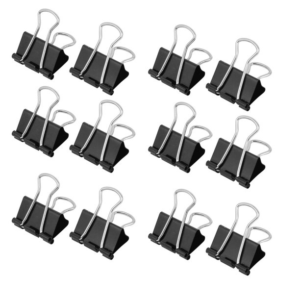
Binder document clips to help anchor to the pot the tie down branches with the kitchen string and train a plant to be in a small space.
Pruning scissors sized to cut a branch off that is up to 3/4 to one inch thick.
Tiny pointed fine micro trim scissors that you already use as part of your Recipe equipment when cutting up your flower when decarbing your plant for the Recipe. These micro scissors are included with the box.

Seeds. One seed will grow one plant unless it’s a dud. Seeds are often sold 3-5 seeds per packet. Cannabis seeds are very small and tiny, maybe 1/8th inch diameter. People often sprout at least two seeds at a time for a grow in case one does not sprout. Seeds should be purchased from a reliable seed seller, like your local trusted dispensary or from a reliable seed bank company as they can be expensive. You are looking for reputation. A normal price is often $65-$70 for 5 seeds plus the cost of shipping and/or insuring them (another $20-$30) if ordering from a legal seed bank company. So one seed might be about $20.
And for your finished, harvested flowers, the regular storage equipment:
Mason jars for storage.
Boveda packs for storage.
Tongs. Vinyl or nitrile gloves.
So, how many plants do you need to grow?
First, if your chosen cannabis consumption method is by inhaling, test what strain is most helpful to you first before getting set up with seeds. Most people find they need to purchase various types and strains of flower buds to try in their inhaler from their higher end dispensary first to see which strains give the most consistent and positive pain reduction effects. This includes their CBD-rich experiments too.
Once the strain or two that will work becomes apparent, and apparent in multiple purchases of this same strain, even at other dispensaries of the same strain(s), buy your seeds or clone of that particular strain from your dispensary as your chosen seed strain to grow.
And keep in mind that the strain type that works might be a difficult strain to grow in your environment for various reasons. As well, some of the hybrid strains might not be available yet as seeds for purchase.
Because inhaling your medicine uses more flower quantities, gauge how much flower you tend to use per day and calculate how much that means in a year.
Using the dry flower inhalers designed more for medical users with special micro-dosing inserts, you might go through up to half a gram per day or a little more depending on how you prepare your inserts and how you learn to turn on and off the heating element in the unit and breathe in from your device.
You will need to grow very much more than someone using the amounts recommended from the Recipe.
You will need 6-12 OUNCES of finished flower bud per year. One plant in the box might yield up to 2 ounces or more. The box will hold 4 plants at a time. With one grow of 4 plants per year you might be able to grow your year’s worth of medicine once a year with one grow.
If you discover like most people, that the Recipe is your preferred medicine, then the plan is simpler.
You will usually only need to grow one plant per year depending on how much Recipe you use.
Because clones also will grow to be individual plants regardless of the plant they are cloned from, and could turn out differently than expected, most people prefer to do their home grows starting from seeds.
For the Recipe cannabis hemp CBD part of it, purchase the Suver Haze strain seeds only because it often has one of the highest CBD concentrations in it. Many find inhaling this strain also has more pain relieving qualities.
Because hemp CBD flower can be purchased from a few select farms certified organic (because hemp is federally legal, it can be certified organic, marijuana cannabis cannot), most users find it easier and more cost effective to purchase their hemp CBD-rich plant for the Recipe already as flower rather than the expense and trial of growing it.
For the cannabis marijuana THC-rich flower needed, purchase simple White Widow strain type seeds. Usually even for beginners of home grows, the final flowers of this strain will yield the 12-15% THC needed for the Recipe calculations. And this strain is well known, easy to “train” as it grows in a small space, easy for beginners.
The seeds that have the most chance of success at flower to actually maturing into finished medicine flowers rather than more seeds, are the “feminized” seeds.
These feminized seeds have been bred to be “girls”, which are the cannabis plants with the medicine flowers, rather than the “boys”, which are the plants producing seed balls into harvest instead. Feminized seeds still occasionally produce seeds instead, so those growing these plants must always look for the indications early enough to possibly save the rest of the plants from seeding out if one plant can be culled from the grow early enough.
There is one other consideration in choosing seed types besides the strain. That is deciding on a type cannabis plant called an autoflower vs. the feminized seeds.
The autoflower plants are genetically designed to begin to flower on their own regardless of the light and dark timing and length of grow. They tend to be shorter and/or bushy plants but that’s not a guarantee. And autoflower plants do not particularly like the manipulations needed to coax them to grow just so in a personal space.
However, in the space needed by most very small home growers, choosing the feminized seeds instead of the autoflower seeds can give a better control of how the plant works in a small space and the many growing guides for beginners recommend working with the feminized seeds instead.
A good place to legally purchase your seeds are from your local trusted higher end dispensary.
Also, depending on your legal location to receive seeds through the mail, this well known online seed bank company is often used for their reliable seeds, especially their seeds from this particular and popular seed bank. Most medicine home growers only purchase 5 seeds at a time that can last 2-3 years if growing only 1 or two plants and the rest of the seeds stored properly.
Considering the doses most people need of the Recipe to be 1/8th to 1/2 teaspoon daily, a good plan for one person is to grow enough medicine by growing only one, maybe only two plants per year.
Many grow two plants at one time in case one plant fails. But people are surprised at how much flower is produced by just one plant. A cannabis plant grown outside (if it makes it) can grow several ounces per plant, possibly even a pound or more (16 ounces, with about 28 grams per ounce—a LOT of grams).
A cannabis plant grown inside in a smaller personal space will produce much less but still a lot. Remember you have been purchasing in grams. One single ounce is at least 28 grams! Your full sized Recipe needs only 10- 13 grams and the amount of doses enough for a year.
Some states in their legislation (Oregon used to, you must research this yourself) allow non-commercial, personal growers to grow one or two plants per year for the medical use of others, growing only 6 plants per year all together. Since this is a bit of competition for the dispensaries, if you have identified this is legal in your state, you can try asking around who might be able to take on another yearly medical grow client. The dispensaries might or not tell you whether or not they even know.
Or continue forward to plant one plant yourself by preparing your space.
So budget accordingly. One plant. Or when the two come up ok, make extra Recipe and leave it in your freezer and only do a grow one time every two years or so.
Also, be exceptionally cautious, don’t be tempted, just don’t do it, UNLESS FULLY LEGAL, of re-selling or providing any leftover plant flowers to others! The penalties are more than severe. You could lose your children, or your life as you know it. We’re talking serious jail time.
So best practice is to GO SLOW, GO LOW, only grow as much as you need for yourself per year.
And talk to your plants as they grow, play music for them, encourage them, let them help you heal, thank them that they give their life that you can become more. When respected and acknowledged, this plant can truly be the sacred plant many allow it to be.



